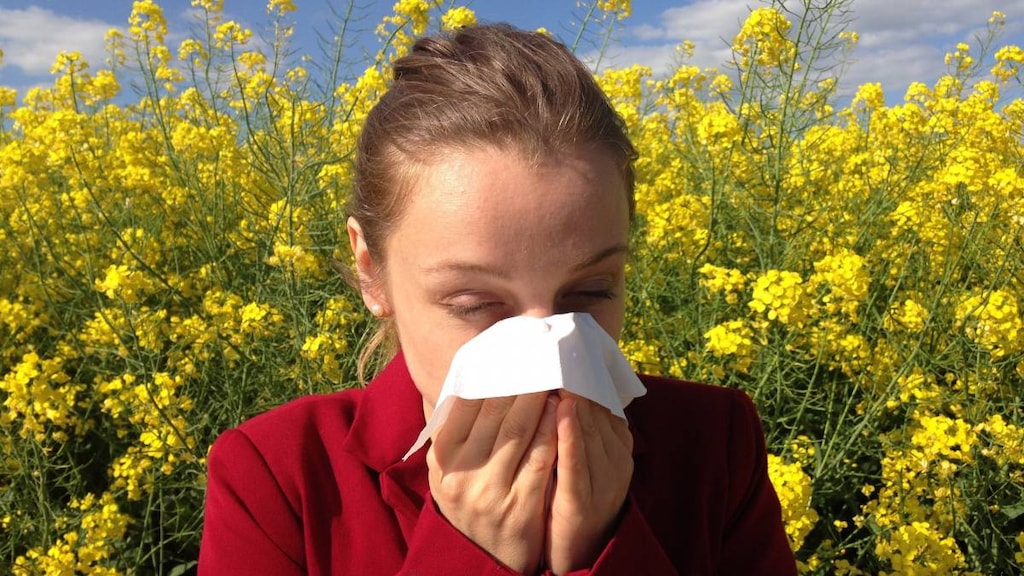Peanut Allergy: Symptoms and Treatment

Peanuts are one of the eight most common food allergies, along with milk, eggs, shellfish, fish, wheat, soy and tree nuts. Thanks to campaigns to educate the public, more people are aware of the existence of peanut allergy among kids and adults alike. Because a peanut allergy has the potential to be extremely severe, many schools won’t allow them in any form (including peanut butter and jelly sandwiches) on school grounds.
Peanuts aren't actually nuts like almonds and pistachios, but rather a legume, like beans, dried peas and lentils. However, people with peanut allergy often develop a tree nut allergy as well, according to FARE (Food Allergy Research & Education).
The number of cases of peanut allergy has been increasing, according to the American College of Allergy, Asthma & Immunology (ACAAI). In fact, between 2010 and 2017, the rate of peanut allergy among America’s kids rose by 21 percent. Why are peanut allergies on the rise? Right now, there are only theories to try to explain it. According to the Mayo Clinic, one possibility is the “hygiene hypothesis.” The idea is that the overly sanitized environment of developed countries doesn’t give children’s immune systems the chance to recognize differences between exposure to harmless and to dangerous substances. (Kids who grow up on farms or who have pets do seem to have fewer allergies.) In contrast, people who live in developing countries have a much lower rate of allergies.
Just how prevalent is peanut allergy? To put the actual numbers in perspective, it’s estimated that about 2.5 percent of American kids are affected, and that as many as 20 percent will outgrow it, explains the ACAAI. But everyone needs to be vigilant. Here’s what you need to know.
What causes a peanut allergy?
All allergies are due to a mistaken reaction by the body’s immune system. That system mistakes the substance for a dangerous invader and releases chemicals called histamines to fight it off. It’s the body’s own chemicals that create a slew of symptoms that, at best, can make life miserable and, at worse, be life-threatening.
IgE (immunoglobin E) is the specific antibody in the bloodstream responsible for the allergic reaction to certain proteins in peanuts and the other common foods associated with allergies, according to the Children’s Hospital of Philadelphia (CHOP).
Different types of exposure can provoke an allergic reaction to peanuts, according to the Mayo Clinic. Direct contact is when you eat the problematic food itself. Cross contact happens when you eat a food that either has a hint of peanut in it or was processed in a facility that also processes peanuts. It’s also possible to have a reaction by inhaling peanut particles in the air from, for instance, a peanut oil cooking spray.
Peanut allergy symptoms
The signs of peanut allergy can be very wide-reaching, involving the skin, mouth and throat, digestive and circulatory systems and even the brain. According to the ACAAI, they can include:
- Vomiting
- Indigestion and stomach cramps
- Diarrhea
- Wheezing, shortness of breath or other breathing difficulties
- Excessive coughing and a hoarse voice
- Tightness in your throat
- Swelling of your tongue and lips
- Weak pulse
- Skin that turns pale or blue
- Hives
- Dizziness or confusion
The most severe reaction to peanuts is life-threatening anaphylaxis. Symptoms can include difficulty breathing, swelling in the throat, a drop in blood pressure, pale skin or blue lips, fainting and dizziness. If airways swell, breathing can become impossible and lead to suffocation. That’s why anaphylaxis needs immediate medical treatment.
Diagnosing a peanut allergy
While having a severe reaction like anaphylaxis makes it easier to diagnose a peanut allergy, some people have more subtle symptoms and may need testing to confirm suspicions. An allergist has many tools available to make a diagnosis, according to CHOP. He or she might order skin or blood tests to look for a reaction to peanuts. With a skin prick test, a very small amount of the food is placed on the skin. The allergen-specific IgE blood test shows the antibody level produced after exposure to the allergen, and component testing is a blood test that can give even more definitive information.
You might need to keep a food diary complete with all foods you ate and portion sizes, what symptoms you experienced and how soon after eating they started, what steps you took to ease symptoms and how long it took for them to go away, according to the ACAAI.
Your allergist might also do a supervised food challenge test, having you eat a certain amount of peanuts to see how allergic you are — and under conditions where emergency help is available, should it be needed, explains CHOP. The test can also be repeated later on to see if you’ve outgrown the allergy.
Emergency treatment options for a severe reaction
The immediate treatment for a severe peanut allergy reaction is a dose of epinephrine, which almost instantly opens airways and eases breathing. Epinephrine is usually given with an auto-injector, such as the Epi-Pen, directly into the thigh. People who have a known peanut allergy need to carry one with them at all times.
However, just the dose of epinephrine isn’t enough. This is still an emergency situation and requires a call to 911 as soon as possible. Continued monitoring and possibly other medications and forms of treatment may be needed, according to CHOP. These could include allergy medications like antihistamines or steroids to tamp down the reaction and an inhaler or oxygen to help with breathing.
Note that sometimes the allergic reaction to peanuts is mild at first and can be treated with an antihistamine. But stay alert for worsening symptoms because epinephrine could still be needed.
Living with a peanut allergy
There’s no preventive treatment for a peanut allergy, so living well with it involves avoiding peanuts. That’s harder to do than it sounds because accidental contact is possible.
In the United States, food manufacturers are required by the Food Allergen Labeling and Consumer Protection Act, which covers the eight major food allergens, to include the word "peanuts" or “contains peanuts” on package labels or the list of ingredients if a food has peanuts in it. However, they are not required to state if a food was made in a facility that also handles peanuts, increasing the risk for cross contamination. Some companies do this voluntarily so when choosing between brands, you might want to pick one that does.
While you can avoid peanuts at home, especially if you cook fresh and skip packaged foods, eating out presents many challenges. Certain cuisines use peanuts in many dishes, including Mexican, African, Indian, Chinese, Vietnamese, Thai and other Asian styles, and you may want to avoid these restaurants if your peanut allergy is severe. No matter where you eat out, be sure to tell your server about your allergy and ask about the ingredients in dishes you’re considering. For example, peanut butter may be an ingredient in sauces or marinades.
Some people allergic to peanuts can tolerate highly refined peanut oil because virtually all the peanut protein has been removed. This is not the case with less refined oils, including those marked "cold-pressed,” “expeller-pressed” or “extruded,” according to FARE.
Preventing peanut allergy
It may be possible to prevent peanut allergy if you get an early enough start. In 2017, the National Institute of Allergy and Infectious Diseases issued guidelines for when to introduce babies to age-appropriate peanut-containing foods. According to those guidelines, this should be done:
- At 4 to 6 months of age for babies at high risk for developing a peanut allergy because of severe eczema or an egg allergy but only after being tested for peanut antibodies
- At 6 months for babies with mild or moderate eczema
- At any age for babies free of eczema and any food allergy
Be sure to discuss your baby’s risk level with the child's doctor before starting any peanut food, but never offer whole peanuts until age 2 because they’re a choking hazard.
Article references
- American College of Allergy, Asthma & Immunology https://acaai.org/allergies/types/food-allergies/types-food-allergy/peanut-allergy
- Mayo Clinic: Q and A: Number of children with peanut allergies has increased significantly https://newsnetwork.mayoclinic.org/discussion/mayo-clinic-q-and-a-number-of-children-with-peanut-allergies-has-increased-significantly/
- National Institute of Allergy and Infectious Diseases, Addendum Guidelines for the Prevention of Peanut Allergy in the United States https://www.niaid.nih.gov/sites/default/files/peanut-allergy-prevention-guidelines-clinician-summary.pdf
- Mayo Clinic, Peanut Allergy https://www.mayoclinic.org/diseases-conditions/peanut-allergy/symptoms-causes/syc-20376175
- Children’s Hospital of Philadelphia, IgE Mediated Food Allergies https://www.chop.edu/conditions-diseases/ige-mediated-food-allergies
- Mayo Clinic, Peanut Allergy Diagnosis and Treatment https://www.mayoclinic.org/diseases-conditions/peanut-allergy/diagnosis-treatment/drc-20376181
- Kids With Food Allergies/Asthma and Allergy Foundation of America, Living With Food Allergies https://www.kidswithfoodallergies.org/label-law-food-allergen-labeling-consumer-protection-act.aspx
- Food Allergy Research & Education, Peanut Allergy https://www.foodallergy.org/common-allergens/peanut-allergy
- Teen Health From Nemours, Nut and Peanut Allergy https://kidshealth.org/en/teens/nut-allergy.html




